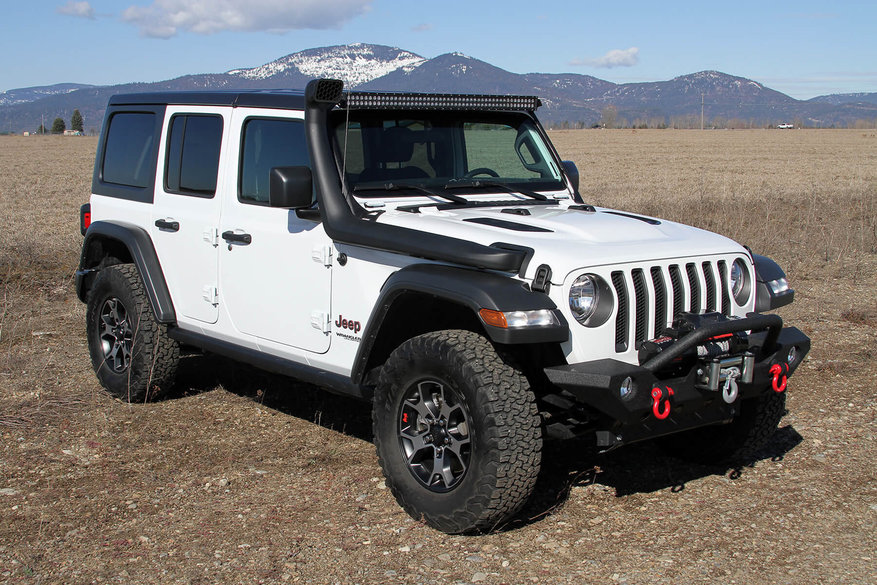by Matt Konkle
Torque Editor-in-Chief
It crawls along the hood and rises up the passenger windshield frame on some Jeep vehicles like an oddly shaped contraption from a Dr. Seuss book. Something weirdly shaped and angled with a top opening that normally points forward mysteriously, as if strange sounds or characters could emerge at any moment.
Perhaps you’ve seen a few of these things during an off-roading weekend, or at a Jeep club event. Maybe a used Jeep you purchased came with one attached.
Well, it really is not that strange of a contraption. In fact, they have been around over a century helping supply engines with colder air — free of debris, water and other contaminants.
And if you are wondering, its name is just about as simple as what it can do for your vehicle.
The Jeep snorkel.
Like we said, this device has been around a long time in the automotive world, since before the first World War, and initially found use mainly on agriculture applications like tractors and transport vehicles.
As the automotive industry grew, and more importantly the four-wheel-drive community following World War 2, snorkels found their way into these recreational vehicles as a way to protect engines while crossing deep water, as well as during dusty conditions.
So if you are spending more time off-road these days, what can a snorkel do to enhance your driving experience?
Basically, its primary use is to provide your engine with cool, debris-free air while driving, but a snorkel can also prevent water or mud from assaulting the engine’s air intake when performing a water crossing. On the extreme end, it provides some extra security against water that could cause your engine to hydrolock and hit you with an expensive repair bill.
A snorkel functions like a cold air intake, raising the Jeep’s intake level above the engine bay height in order to draw that colder air into the engine area. This air is much better than the warmer air that is sucked in from behind the front grille. Plus, it has less contaminant and when the air is cooler, it contains more oxygen. Most vehicles these days utilize sophisticated engine management systems designed to measure real-time factors to improve engine efficiency. By introducing a cooler air inflow, it helps your engine provide more power and torque, while slightly increasing fuel economy.
Beyond the cold air element, Jeep snorkels are designed with extra filtration through a vortex filter at the top of the snorkel that provides another layer of shielding for air coming into the engine. This method helps trap dust and larger contaminants, as well drain rainwater, before they can reach the main filter – helping giving vital engine components a longer lifespan. This makes a snorkel an excellent addition for those who live in dustier, or drier, conditions as a clogged air filter will negatively affect your Jeep's engine performance and fuel consumption.
While all these benefits are excellent for a Jeep’s engine, there are some safety and modification considerations to note.
First, installing a snorkel on the Jeep does not mean the vehicle is now a submarine. Like we said, a snorkel can help keep the Jeep’s engine from hydrolocking in slightly deeper water conditions, but it can’t prevent other sensitive items like electronics, fuses and sensors from damage. Additionally, Jeep does list a maximum water fording depth that should always be respected, so consult your owner’s manual to determine the appropriate level for your model.
Also, while installing a snorkel, many require modification to body panels around the hood area — meaning holes will likely need to be drilled in order to attach the intake and any mounting brackets. If you ever decide to remove the snorkel, those panels will need replacing.
A few other quality-of-life issues to note are wind noise and snorkel height. As the snorkel is normally situated above the passenger door, you’ll hear an increase in wind noise caused by air suction into the snorkel. This is especially noticeable at higher speeds. The snorkel’s extra height could also cause an issue if the Jeep is kept in either a home or parking garage. That extra height is something to remember when out on the trail as well.
Still, the benefits of a snorkel are excellent for almost everyone — and especially for those who consider themselves hardcore off-road drivers.





















